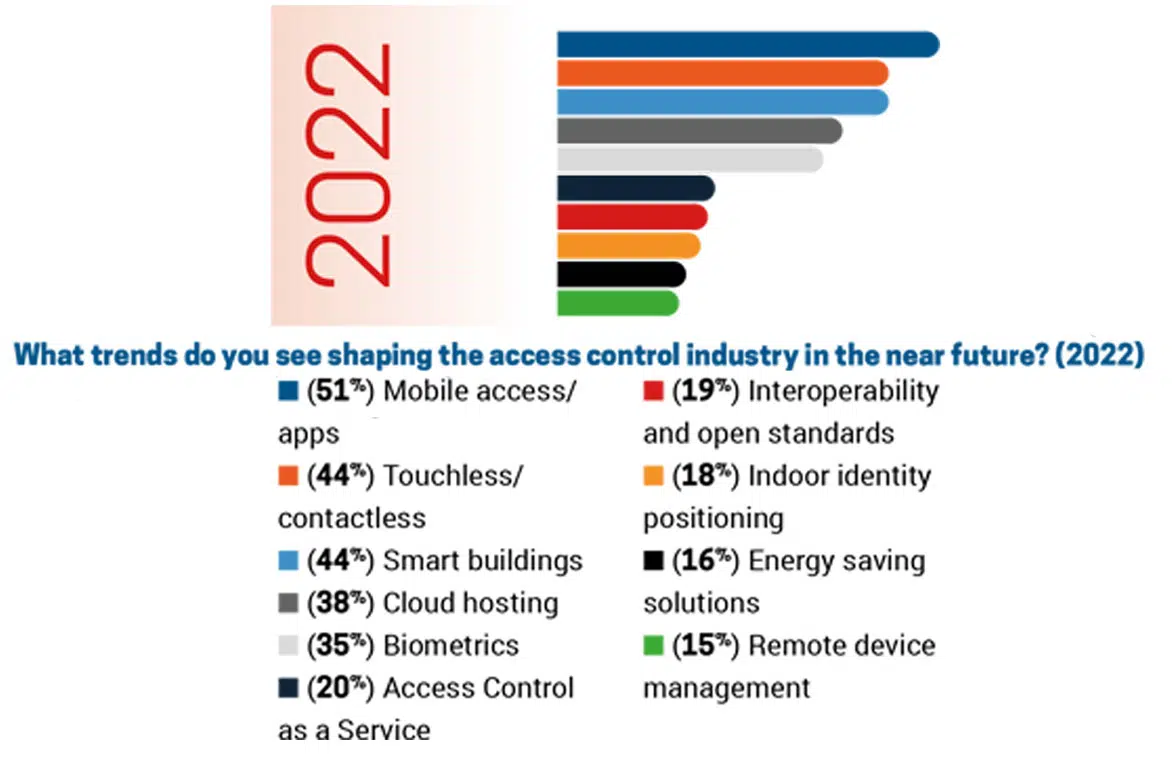
More than four in ten businesses are planning to adopt a mobile-ready contactless access control solution (42%) while just under one in four have already upgraded to a mobile-ready system (24%), a survey of professionals from across a range of industries worldwide reveals.
The survey in The 2022 State of Physical Access Control Report also found that 43% of respondents listed contactless capabilities and 41% mobile access as one of the top three features they would require of any new access control system, and 20% selected contactless and 18% mobile access as the one technology they thought would have “the greatest impact on improving physical access control”.
When asked about the broader trends they believe are shaping the access control industry, more than half cited mobile access and apps (51%), 44% “touchless/contactless”, 44% smart buildings, 38% cloud hosting, 35% biometrics, 20% access-control-as-a-service, 19% interoperability and open standards, 18% indoor identity positioning, 16% energy saving solutions and 18% remote device management.
“Perhaps it should be no surprise that mobile technology is so sought after – the benefits have been highlighted by proponents for some time now,” the researchers say.
“Mobile tech can provide a flexible way to issue and revoke credentials, where software access management solutions can work hand-in-hand to swiftly provide QR or access codes to visitor mobile devices.
“Meanwhile, employees or regular users may find credentials on their mobile more convenient and secure — users are less likely to misplace their mobile device than access cards.”
The survey also shows that, while sectors such as food manufacturing, hotels and medical facilities “might have insisted on contactless entry mechanisms before Covid-19, standard office and residential buildings may have viewed it as an ‘additional benefit, but not the primary driver behind purchasing,” the researchers say.
“There is a further drive towards contactless biometrics — with fingerprint scanners not requiring touchpoints, for instance,” they add.
The IFSEC Global and HID Global 2022 Global Physical Access Control Trend report is based on a survey in February and March this year of 1,000 professionals from sectors ranging from retail, entertainment and healthcare to finance, manufacturing and technology “with particular emphasis on the UK and EMEA, North America and the Asia Pacific regions”.
Next: Visit the NFCW Expo to find new suppliers and solutions